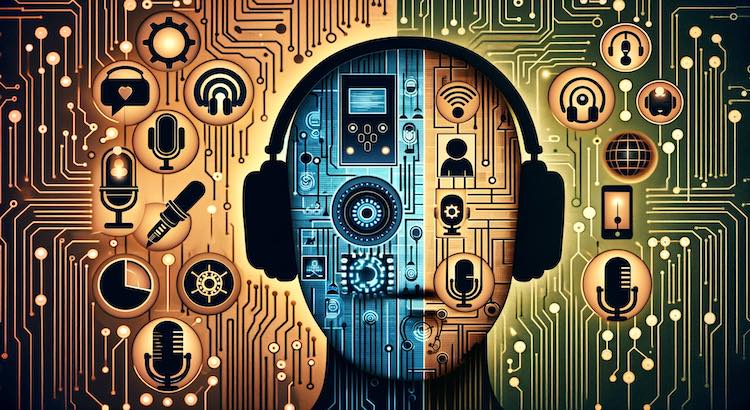Automated vs. Human Transcription Services for Podcasts: Accuracy and Cost Compared
Podcasting has become one of the most popular ways to share stories and ideas online, with over 2 million active podcasts worldwide (Podcast Insights, 2023). As listeners and creators grow, so does the demand for making podcasts more accessible and easy to find. One simple way to do this is by using transcription services to turn spoken words into written text. But which is better: automated or human-powered transcription? In this guide, we’ll compare both methods so podcasters can make the best choice for their needs.
Why Transcription Matters for Podcasters
Transcribing podcasts offers many benefits:
- Improves accessibility for listeners who are deaf or hard of hearing.
- Makes episodes searchable for search engines and users alike.
- Enables repurposing content for blogs, email, or social media.
- Helps with accurate closed captions and subtitles.
The right transcription service can help your podcast reach a wider audience—and keep your content organized for the future.
What Are Automated Transcription Services?
Automated transcription uses advanced software powered by artificial intelligence (AI) to change audio into text. These tools process audio quickly and cost less than hiring a person.
Pros of Automated Transcription
- Speed: Automated services can handle hours of audio in just minutes.
- Affordability: Automated transcription is usually much cheaper per minute than human alternatives (see rates).
- Scalability: Perfect for transcribing large batches of episodes at once.
- Convenient subscriptions: Many providers offer AI transcription subscription plans for regular users.
Cons of Automated Transcription
- Lower Accuracy: AI may make mistakes with strong accents, multiple speakers, background noise, or technical terms. Studies show accuracy rates can range from 80–90% (Speechmatics, 2022), but complex audio may fall lower.
- Lack of context: Automated tools can mix up speaker names and miss subtleties like sarcasm, emotion, or inside jokes.
- May require review: You often need to correct errors with proofreading services.
How Human Transcription Services Work
With human transcription services, trained professionals listen and type out each episode. They check for grammar, speakers, and technical words, often offering extra features like timestamps or formatting.
Pros of Human Transcription
- High Accuracy: Human transcribers can achieve over 99% accuracy and better understand accents, jargon, and complex conversations (Rev, 2023).
- Context and Clarity: People recognize emotion, humor, slang, and specialized speech.
- Detailed editing: Proofreading and formatting services catch small mistakes (learn more).
- Suitable for all audio: Even poor-quality recordings get accurate results.
Cons of Human Transcription
- Higher Cost: Manual work makes this method more expensive per minute (compare prices).
- Slower Turnaround: It can take 24–48 hours or longer for large projects.
Comparing Both Methods: What Should Podcasters Consider?
There’s no single best choice for everyone. Your decision depends on:
- Budget: Choose automated services for basic needs and tight budgets. Go human when accuracy is crucial.
- Turnaround Time: If you’re in a hurry, automated transcription delivers fastest.
- Content Complexity: Podcasts with industry terms, lots of speakers, or heavy accents benefit from human expertise.
- Legal or Medical Needs: Regulations often require the highest accuracy, best provided by professionals.
- Accessibility Goals: For captioning or subtitles, many podcasters use closed caption services or subtitling services to ensure everyone can follow along.
Cost Comparison: Automated vs. Human Transcription
For reference, automated transcription rates often start at just a few cents per minute, whereas human transcription costs more due to manual labor. Podcasters should balance their budget against accuracy needs.
How to Choose the Right Transcription Service
Follow these steps when making your choice:
- Start with a trial—order a short transcript using both methods to compare results.
- Review accuracy and ease of use.
- Consider if you need extra services, such as text translation or audio translation for global listeners.
- Check for support with captions or subtitles if you post video podcasts.
Conclusion: The Best Fit for Every Podcaster
Automated transcription offers a fast, budget-friendly solution for many podcasters. Human transcription, though more costly and time-consuming, delivers unmatched accuracy and understanding—especially where content is complex, or perfect text is essential.
When deciding between the two, weigh your priorities: speed, accuracy, price, and content type. Often, creators use both—starting with automated services and editing for accuracy, or using human transcription for their flagship content.
GoTranscript supports both options, offering human-powered transcription and AI transcription designed for podcasters. Their services also extend to closed captioning, subtitling, translation, and proofreading, with affordable transcription pricing and captioning rates. Ready to make your podcast more accessible? You can order transcription or order captions for your next episode today.



















 Verified Order
Verified Order